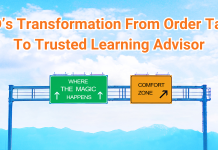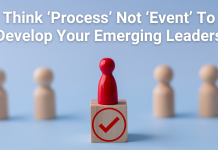
You hear CEOs say all the time, “People are our most important asset.” But most of the time they really don’t mean it. Let’s be honest, if you could be a fly on the wall in the executive board room would you hear more talk about marketing tactics or talent management? About profit levels or staff retention? Share price or morale? I think we all know the answers.
Above all else, C-level executives are trying to increase shareholder value. Right or wrong, they care more about investor returns than anything else.
The good news is that employee engagement is the secret ingredient that actually leads to a higher stock price. In a 2009 study conducted by Kenexa, the most engaged companies had five times higher total shareholder return (over five years) than the least engaged companies. In another study, conducted by Towers Perrin in 2011, companies with engaged employees were found to have 6% higher net profit margins.
Let’s be clear, we’re not just about employee “satisfaction” but rather “engagement.” Employee engagement is the emotional commitment the employee has to the organization and its goals. Engaged employees use discretionary effort.
The Engagement-Profit Chain is what I call the series of sequential steps that enables engagement to lead to better shareholder returns. Based on the classic “Service Profit Chain” first described by Jim Heskett and Earl Sasser, the Engagement-Profit Chain model details how the discretionary effort of a workforce triggers a series of beneficial actions like a chain of dominos.
Engaged Employees lead to…
higher service, quality, and productivity, which leads to…
higher customer satisfaction, which leads to…
increased sales (from more repeat business and referrals), which leads to…
higher levels of profit, which leads to…
higher shareholder returns (i.e., stock price)
The Engagement-Profit chain isn’t just an academic theory. Campbell’s Soup CEO, Doug Conant, is an example of someone who used the Chain for transformation. When Conant joined Campbell’s in 2000 the company was experiencing declining sales, had lost 54% of their market value, and Conant was told that their employee engagement levels were the worst ever seen among the Fortune 500.
So what was at the core of Conant’s turnaround plan? As he told one business reporter, “To win in the marketplace…you must first win in the workplace. I’m obsessed with keeping employee engagement front and center.” So quarter after quarter, year after year, Conant made sure that employee engagement was one of the top Campbell’s initiatives.
By 2009, Campbell’s Soup had achieved an astounding 23:1 engaged to disengaged employee ratio. More importantly, in the decade that saw the S&P 500 stocks lose 10% of their value, Campbell’s Soup stock actually increased by 30%. In other words, “keeping employee engagement front and center” triggered the Engagement-Profit chain and helped Campbell’s to deliver stellar returns.






